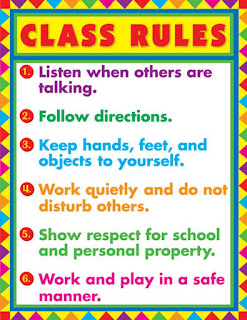PBIS
PBIS and SWPBIS Framework & Importance
Positive Behavioral Interventions and Supports (PBIS) and Schoolwide PBIS is a framework of teaching behavioral expectations both in the classroom and schoolwide. PBIS uses a three tiered system that focuses its efforts 80% school wide, 15% specialized intervention for at risk students and 5% interventions for students with high risk behavior (PBIS, 2014). Having the behavioral expectations be the same for the whole school leads to a united front in all areas of the school (from the cafeteria, to the bus to the classroom) and greater results (PBIS, 2017).
The framework involves planning, practicing, rewarding and data collection. The administration and teachers spend time planning for behaviors they expect to see. Administrators decide schoolwide expectations (ex: be safe, be responsible, be respectful) and then disseminate these standards to the teachers who help to create a matrix of expected behaviors for schoolwide settings (i.e bus, hall, cafeteria, classroom). Plenty of time needs to be allotted for practicing said behaviors through practical examples, role play and class discussions. It is important that there is high frequency rewards given to reinforce positive behaviors. The process is data driven. The data is collected, tallied and then disseminated back to the teaches (monthly and yearly comparisons) so the process can be refined if needed and/or positive school trends can be highlighted (Olsen & Baumann, 2014).
Core principles of PBIS
At is core PBIS focuses on consistency; in language, practice and application (PBIS, 2017). PBIS focuses on positive behaviors that are expected for students to exhibit instead of focusing on negative behaviors that are to be avoided. Traditional behavior management systems spend most of their time focusing on the negative instead of spending time teaching positive behaviors. Another great impact of PBIS is that once behavior expectations are clear and positive behaviors become the norm then academic achievement increases and referral to special education is reduced (Olsen & Baumann, 2014).
At is core PBIS focuses on consistency; in language, practice and application (PBIS, 2017). PBIS focuses on positive behaviors that are expected for students to exhibit instead of focusing on negative behaviors that are to be avoided. Traditional behavior management systems spend most of their time focusing on the negative instead of spending time teaching positive behaviors. Another great impact of PBIS is that once behavior expectations are clear and positive behaviors become the norm then academic achievement increases and referral to special education is reduced (Olsen & Baumann, 2014).
Three examples of PBIS in my classroom
Even if the school I work for does not use PBIS I will implement PBIS in my elementary ESL classroom. I will need to plan the positive behaviors that I want to see, give the students many chances to practice the behaviors and reward the students when I see these behaviors being displayed. Here are three ways that I will implement PBIS into my classroom.
Get to know students’ preference for rewards
I will adapt the “Forced Choice Reinforcement Inventory” (PBIS World, 2017) to see what
type of rewards are incentives for my students (i.e. adult approval, competitive approval,
peer approval, independent rewards, consumable rewards). This will provide students with
immediate buy in which will increase motivation.
type of rewards are incentives for my students (i.e. adult approval, competitive approval,
peer approval, independent rewards, consumable rewards). This will provide students with
immediate buy in which will increase motivation.
Practice
Every session I see the students we will recite our class behaviors (be caring, be responsible,
be respectful). Weekly I will plan time into the curriculum where students are given a chance to
practice positive behaviors. Practicing positive behaviors will be easy to weave into ESL curriculum
which focuses on skills related to reading, writing, vocabulary building, speaking and listening.
I will include:
be respectful). Weekly I will plan time into the curriculum where students are given a chance to
practice positive behaviors. Practicing positive behaviors will be easy to weave into ESL curriculum
which focuses on skills related to reading, writing, vocabulary building, speaking and listening.
I will include:
- Journal prompts (ie. “How did you display being caring this week?”)
- Role play: where partners determine what will be covered
- Class discussions surrounding how we see our class displaying positive behavior
- Vocabulary activities surrounding key terms
Reward system
PBIS shows that using rewards frequently and immediately when linked to specific behaviors yields
results (Horner & Goodman,n.d). I will implement a reward system based on how students in my class
like to receive rewards. A token system will be established where students can earn tokens for
positive behavior and then when max number is reached each week they can earn a reward of
their choice (examples: free time to do what they want, certificate, prize from treasure chest).
Once week I will also choose a student from each grade level (from token’s earned) to be highlighted
in the homeroom class as the star student (small poster in the shape of a star with their picture attached to the top and “Star student”
written in the middle).
results (Horner & Goodman,n.d). I will implement a reward system based on how students in my class
like to receive rewards. A token system will be established where students can earn tokens for
positive behavior and then when max number is reached each week they can earn a reward of
their choice (examples: free time to do what they want, certificate, prize from treasure chest).
Once week I will also choose a student from each grade level (from token’s earned) to be highlighted
in the homeroom class as the star student (small poster in the shape of a star with their picture attached to the top and “Star student”
written in the middle).
References
Horner, R. & Goodman, S. (n,d). Using Rewards With-in School wide PBIS PPT. Retrieved on
December 11, 2017 from
https://drive.google.com/drive/folders/1z22hQp3UbCcD3WwhMt0P9vkT1-66Fxm3
PBIS. (2017). SWPBIS for Beginners. Retrieved on December 11, 2017 from
http://www.pbis.org/school/swpbis-for-beginners
PBIS. (2017). Tier 1 Supports. Retrieved on December 11, 2017 from
http://www.pbis.org/school/swpbis-for-beginners







Comments
Post a Comment